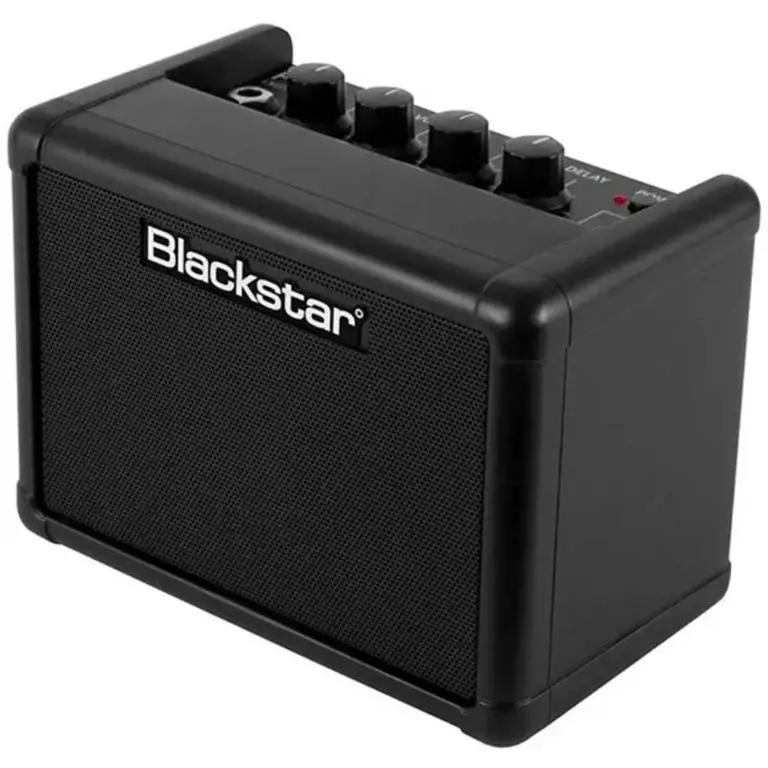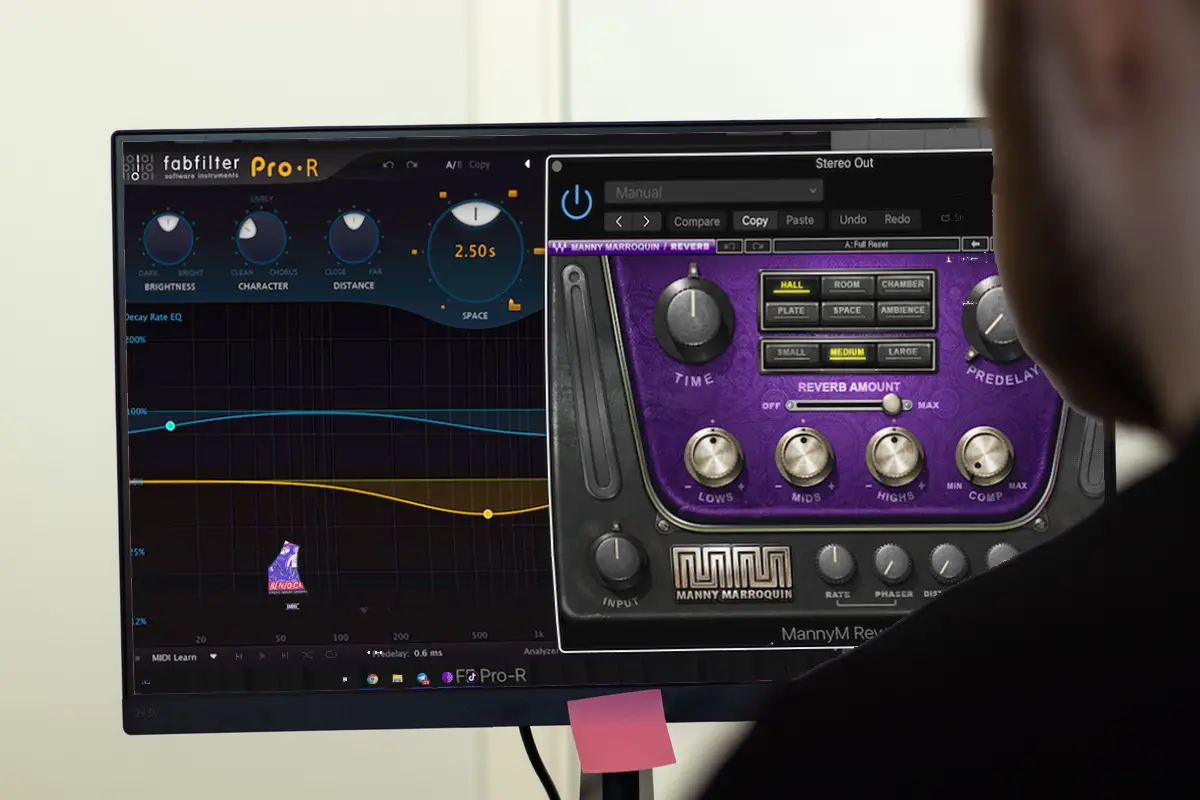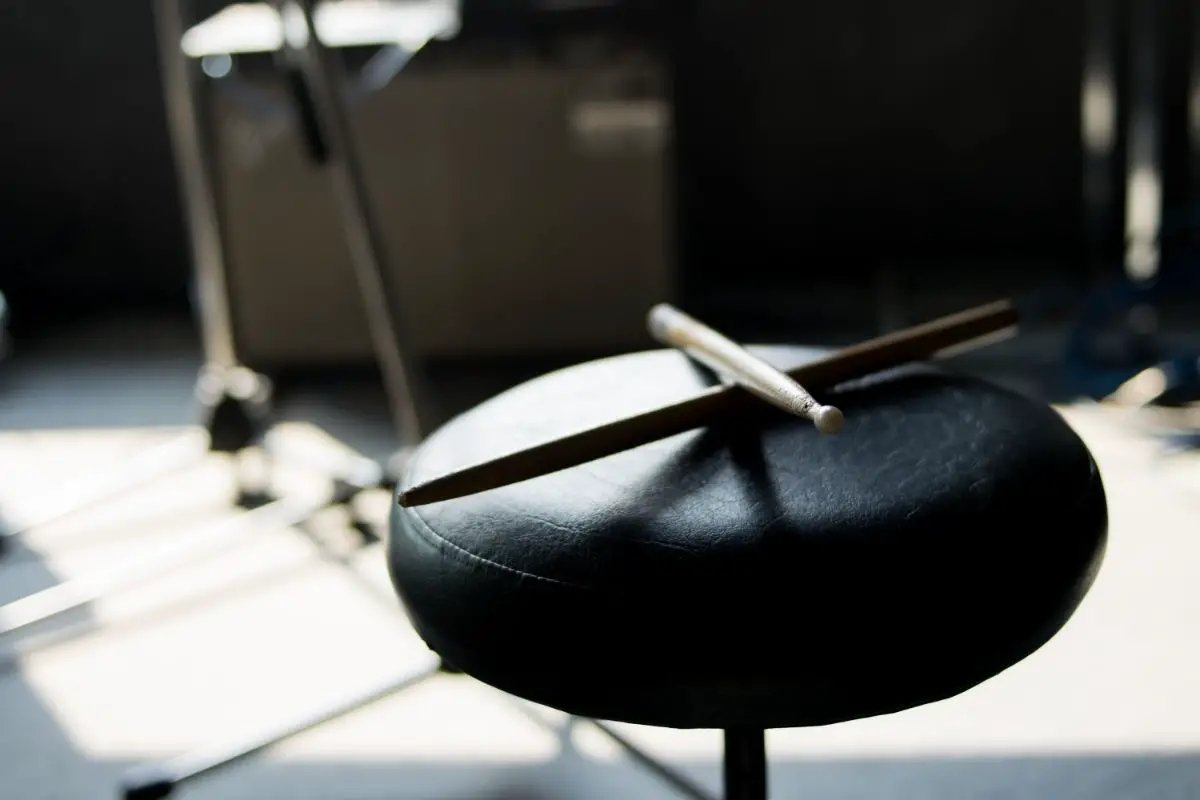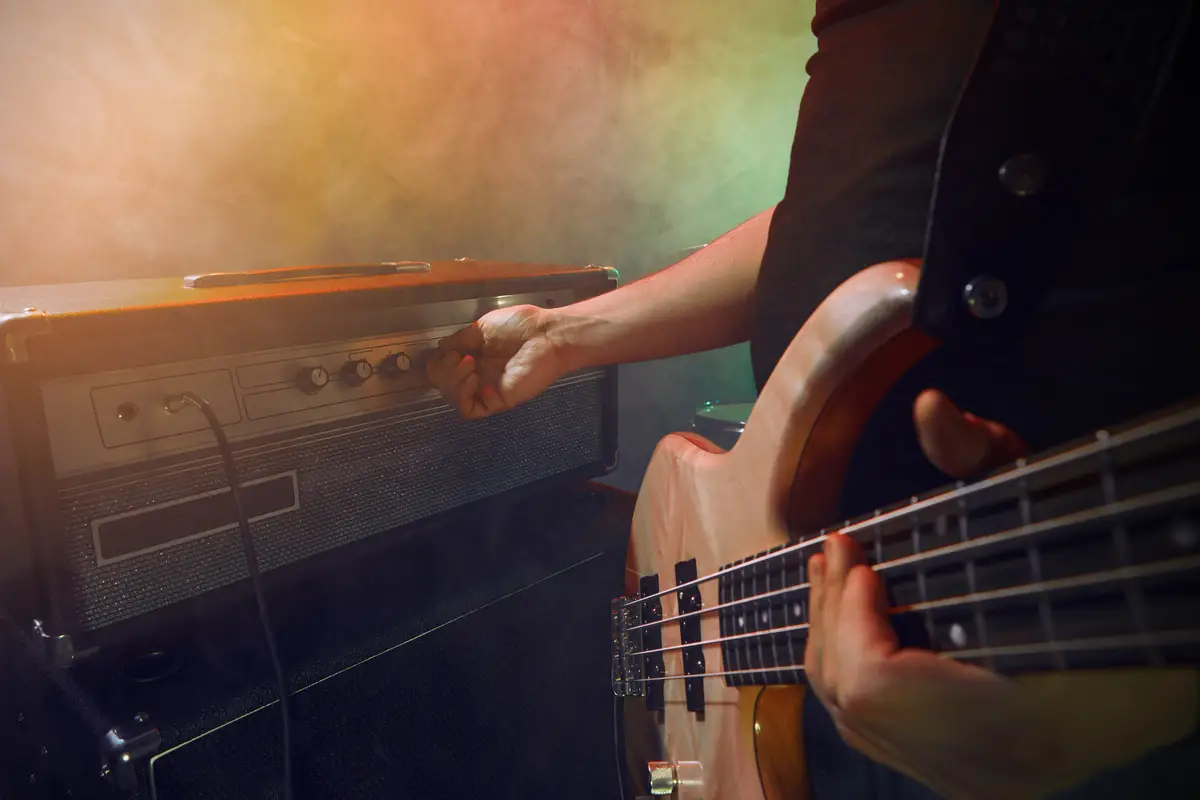The Best Compressor Pedal You Can Get in 2024
We all love listening to music, but few of us realize just how much work goes into recording a single song. If you have ever tried to record your own music, you already know about these difficulties.
There are several effects that apply to raw recordings to make them sound better and more professional.
A common effect used in any music studio is compression. This is reducing the dynamic range of a recording, often a piece of music.
It helps to bring the quietest parts of the track up to the same level as the loudest parts to make the overall mix sound more balanced.
Compression is also an effect that you can buy as a guitar foot pedal, where it serves a similar yet slightly different function.
Compressor pedals also help to reduce the dynamic range of your playing. They help to create a thicker, more balanced sound when playing your guitar clean, with no distortion or other effects.They can also provide more sustain, by making notes ring out for longer before dying down.
Today, we will look at some of the best compressor pedals for guitarists and what they can do to enhance your playing.
Best Compressor Pedal (Quick Summary)
Wampler Ego Compressor V2 Guitar Effects Pedal
- Brings a new level of of control to what is expected and needed by today’s guitar players
- Designed to ensure playing dynamics could be retained without coloring the tone at all
- Allows your original signal to be blended in so you can get all the benefits of a great compressor but with the option to remove the squash at the front by bringing the bypassed signal in
- With this pedal you can have full country squash or open studio level parallel compression
- With a comprehensive array of controls and a pure core tone, the Ego works perfectly as an “always on” compressor or as “an effect”
An ‘Operational Transconductance Amplifier’ (OTA) is one of the oldest types of compression effect used in music. We know this compression type for its brightness and saturated tone.
This pedal gives you all the warmth and depth of an OTA compressor with just a tap of your foot. A common issue with OTA is that it can make the low end of your playing become muddy. However, that isn’t a problem with this Wampler Ego pedal.
With the tone knob, you can control how much this unit affects the sound of your guitar. When fully clockwise, it will make your playing sound much brighter and more jangly. This is just what you want for certain types of country music.
The blend knob controls the balance between your clean signal and the compressed signal. This means you can make the compression as pronounced or as subtle as you want.
This compression pedal will reduce the volume of very loud frequencies, while raising the volume of quieter ones.
The sustain control allows you to set how much compression occurs. The higher you set it, the longer your notes will ring out for.
To control how quickly the effect takes place, you can use the attack knob to set a gentle compression or a more aggressive one for ‘chickin’ pickin’
Pros
- Tone control allows you to make your guitar warmer and brighter.
- Solid durable design.
- Easy to use controls for getting the compression just how you want it.
Cons
- May not work well when paired with distortion or overdrive pedals.
JHS Pulp N’ Peel V4 Compressor Guitar Effects Pedal
- 4 controls, added an EQ knob, Dirt toggle, XLR output
- Improved detection circuit for smoother tones with added sustain
- Dirt voiced to go from warm tone enhancement to gritty tonal foundation
- High-quality buffer switch allows true-bypass or buffered operation for driving long cable runs
- Standard 9V DC Negative power, consumes less than 100mA
The ‘Pulp N’ Peel’ V4 is simpler than the Wampler Ego. However, that doesn’t mean you can’t use it to create a large variety of weird and wonderful sounds.
This pedal only has four control knobs and one switch. This makes it very easy to navigate for those who haven’t used a compressor pedal before. Thanks to the dirt switch, the ‘Pulp N’ Peel’ can work well with distorted guitar and clean tones.
To control how much compression this pedal applies to your playing, you only need to turn one knob, labeled ‘comp’. Turning this knob clockwise will make your sound thicker and warmer, as well as giving you more sustain on each note.
There is also a ‘blend’ control similar to the one on the Wampler to adjust the mix between your clean signal and the compressed one.
Another outstanding feature of this pedal is the EQ knob. This allows you to adjust the balance of different frequencies in your mix.
When set to noon, this control will have no effect on your clean signal. When turned clockwise, it will boost your treble while cutting back on bass. Turning it anti-clockwise will have the opposite effect, giving you lots of control over your tone.
Pros
- Built in EQ.
- The buffer switch on the side helps you preserve your clean signal when the pedal is off.
- Very simple to navigate, while still offering lots of versatility.
Cons
- No attack controls for adjusting the speed at which compression is applied.
MXR Dyna Comp Guitar Effects Pedal
- In-line compressor “evens out” the signal to your amplifier
- Useful for increased sustain with stable dynamics
- Nashville studio standard
- Power: Dunlop ECB003 AC Adapter or Single 9 volt battery
- Constant output signal
If you’re working on a budget and want a compressor pedal that is very easy to use, then the MXR Dyna Comp is just the thing for you. With just two control knobs, this is one of the simplest compression pedals on the market. This makes it a great way for beginners to learn about compression.
The ‘sensitivity’ control helps you set the amount of compression applied as well as the attack. Rotating this knob clockwise will take you from a clean signal to a saturated, warm tone, with lots of sustain on your long notes.
The only other control is ‘output’, which adjusts the master volume of the compressed signal.
This product makes your playing much brighter and can also allow you to get a very clippy sound. This is a must-have tool for any country music players, who want to recreate that classic Nashville sound.
You can power this pedal with a standard AC power supply or with a single 9V battery. It is very portable and allows you to use it in venues where there are few power outlets.
Pros
- Warm compressor pedal that is great for country music.
- Simple controls that are very easy to navigate and use.
- Can run on either an AC adaptor or a 9V battery.
Cons
- Few options for customizing your own personal tone.
TC Electronic Hypergravity Compressor
- Studio-quality multiband compressor
- Vintage Mode for classic stomp box compression
- Tone print enabled – for a world of signature and customizable effects
- True or buffered bypass
Many of the pedals we have looked at are great for introducing yourself to the concept of compression. This allows you can see what it does.
This TC Hypergravity Compressor takes things a step further and is fully customizable. This allowing you to craft your own unique control.
To accomplish this, the pedal is compatible with an app on your phone. The smartphone app gives you complete control over your compression.
By setting the toggle to ‘Toneprint’ you can beam your customized compression effect straight to your pedal. You can also choose from a list of pre-sets inspired by several famous artists.
The toggle also has options for ‘Spectra’ and Vintage. Vintage will give you the squishy, bright compression that we saw on the MXR Dyna Comp, which is perfect for country music.
Spectra,hand, on the other hand offers a more transparent compression. It is more subtle but still great at narrowing the dynamic range of your playing.
Even if you don’t use the TonePrint app, the four control knobs give you lots of control over your compression.
There are controls to adjust the level of compression applied, as well as ‘attack’ and ‘blend’ settings to weave it into your mix as subtly or as blatantly as you want.
This pedal is a great tool for those who have tried other compression pedals and are ready for something a little more advanced.
Pros
- Four controls knobs for adjusting the output volume, sustain attack and blend.
- Switch between vintage stomp box style compression and TC electronic’s own Spectra comp.
- ‘Toneprint’ function and app support allow you to customize your effect even more.
Cons
- It may be too complex for complete beginners to compression.
Origin Effects Cali76 Compact Deluxe
An FET (Field-Effect Transistor) compressor is another popular type of compressor, commonly found in studios. The Cali76 aims to recreate the sound of the classic UA 1176 FET compressor in all of its glory.
Just like its inspiration, this pedal gives you a much thicker sound while making your tone significantly more bright.
Some artists may not like the way this unit adjusts the clean tone of your guitar. Others will love the warmth it brings to their playing.
Like the TC Hypergravity, the Cali76 gives you a lot of control over your compression. With this, you can craft the exact sound that you want.
There are six control knobs allowing you to set the level of compression, the threshold at which it is applied, and how fast it activates.
The Cali76 has a sturdy metal chassis that means it can withstand a lot of punishment on stage. It also has an LED below the controls that tells you when the effect is active. It also tells you when you need to turn down your gain to prevent clipping.
The ‘dry’ knob allows you to mix back in your dry signal to make your compression more subtle, or more in your face.
Pros
- Durable metal construction.
- 6 different control knobs for complete control over your tone and compression.
- Perfectly replicates the sound of the classic UA 1176 FET compressor.
Cons
- Very expensive.
Compressor Pedal Buyers Guide
Compressor pedals come in a variety of different shapes and sizes, which can make picking the right one a bit of a challenge.
You want a product that will allow you to create the sound you want, but isn’t too complicated. In our buyer’s guide, we will offer some top tips for finding the right compressor pedal for your rig.
Distortion vs clean in your compressor pedal
Compressor pedals are often used to boost a clean signal and give it a thicker sound. This is useful for genres like country music or folk, where you don’t want to significantly alter the voice of your guitar, just boost it, so it is more balanced.
There are some compressors that will also work with a distorted signal. However, you will want to look for a unit that specializes in this area.
Otherwise, you may end up with your signal becoming muddy and too distorted. One of the first things you should think about with a compressor pedal is the style of music you want to play.
Different types of compressor pedals
Before technology allowed us to make miniature compressors for guitar pedals, most compressors were large, bulky studio units.
Many modern pedals aim to replicate the sound offered by these old models, and so you will want to think about the various compressors on offer.
‘Operational Transconductance Amplifier’, or OTA compressors, such as the Wampler Ego, are one of the oldest types that are often used for country music.
These compressors have a very distinctive, warm sound that makes the clean signal from your guitar ring out beautifully.
There are also Field Effect Transistor (FET) compressors like the Cali76, which also have a warm sound, but do more to alter the tone of your playing.
This may be annoying for some who want to let their clean signal speak for itself. Others will love the vibrant sparkle these units add to their playing, which works for a number of different genres.
If you want something that will have minimum impact on the tone of your instrument, look for a pedal that emulates a Voltage Controlled Amplifier (VCA) compressor.
These are one of the most common types of compressors found in studios. They won’t affect the voice of your guitar, just its dynamic range.
There are also optical compressors, which use photo-resistors to alter your guitar’s signal. These units don’t have a lot of attack,
which means the effect is applied quite slowly. As such, optical compressors provide a very smooth, clean sound that is great for Jazz or Funk.
Finally, there are tube compressors, which add warmth and depth to your guitar’s tone for a smooth, vibrant effect.
What are the best available controls for your compressor
If you have never used a compressor pedal before, you may struggle to understand how they work and what effect they will have on your playing. It may be best to start off with a simple pedal that doesn’t have a lot of controls.
Products like the MXR Dyna Comp only have two controls and apply a very specific type of compression to your clean signal. It will be easy for you to understand what effect the pedal is having. It will also help you understand how you can incorporate it into your playing.
Once you get the hang of using compression, you will be ready to move onto more complex models like the TC Electronics Hypergravity Compressor.
These units have additional controls such as ‘Attack’ which lets you adjust the speed at which the compression is applied.
Blend is another very useful control that allows you to mix your compressed signal with your dry, unaltered signal. This has the effect of making your compression more subtle, or significantly more pronounced.
Another control to look out for is an equalizer, or EQ. Often these will come as two separate knobs for controlling the volume of both high and low frequencies. This lets you adjust the balance of your mix to boost either the bass or the treble as you require.
You may also encounter ‘see-saw’ EQs which have only one knob. When set to noon, one of these knobs will have no effect on your clean signal.
Turning the knob clockwise will boost your treble while cutting back on bass and rotating it anti-clockwise will have the opposite effect.
How the power supply affects your compressor pedal
A standard wall outlet can power most compressor pedals through a 12V adaptor. There are daisy chain cables that allow you to connect multiple pedals to the same adaptor and run your entire board through one plug socket.
However, while it is rare, sometimes you may not have a convenient wall outlet available for plugging your pedal into. Here, you may be better off buying a pedal that can run on a 9V battery and an adaptor.
Battery powered pedals are more portable and can be used even when there isn’t a wall outlet available.
Frequently Asked Questions
How Do Compressor Pedals Work?
As we said in the intro, compressor pedals reduce the dynamic range of your guitar to create a more balanced sound. They do this by setting a certain threshold and cutting any frequencies that exceed, while boosting those that fall below it.
By adjusting the threshold, you can decide what is cut, and what is boosted to affect the influence your compressor has on your overall sound.
When used properly, a compressor will make the loud parts of your playing slightly louder, while boosting the volume of the quieter notes. As a result, they can reduce the speed with which notes die off, to create a sustain effect.
What Is A Dry And Wet Signal?
You will often see the signal from your guitar described as dry or wet. A dry signal is the input from your guitar before any effects apply to it. Another name for this is the clean signal, since it is unadulterated and only being boosted by your amp.
The wet signal is the output from a pedal, and refers to the signal from your guitar after effects have been applied.
Some compressor pedals will have a ‘Blend’ or ‘Dry’ knob that allows you to control the balance between your wet and dry signals. This helps to make a certain effect more or less pronounced in the final mix.













